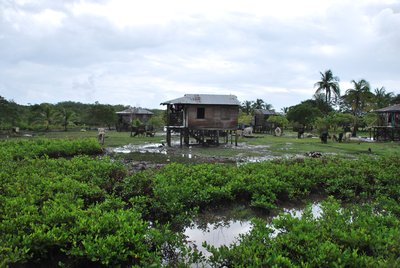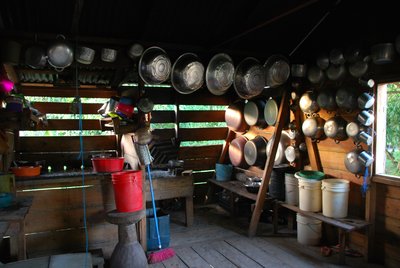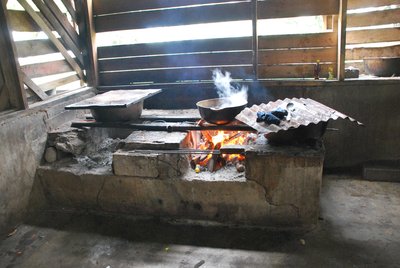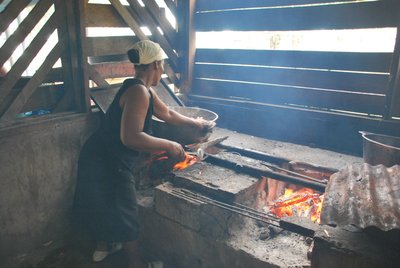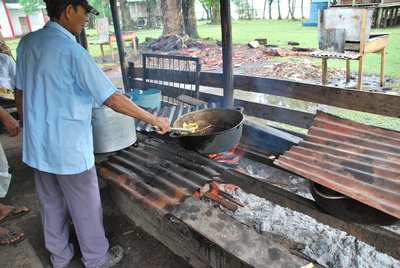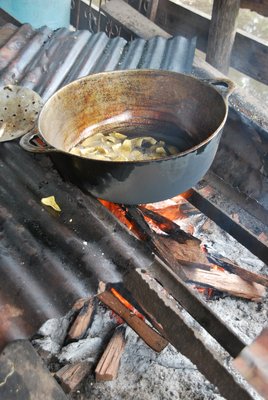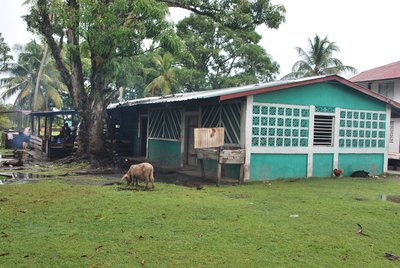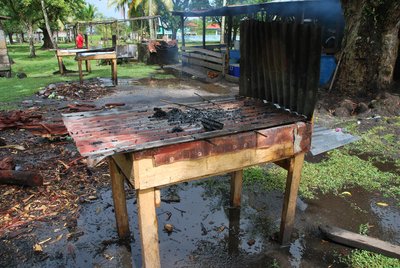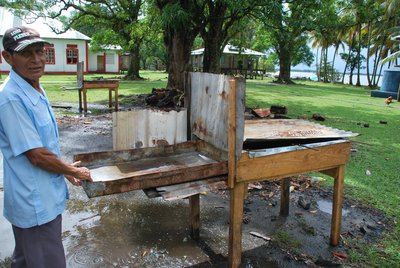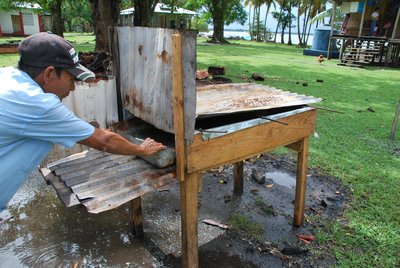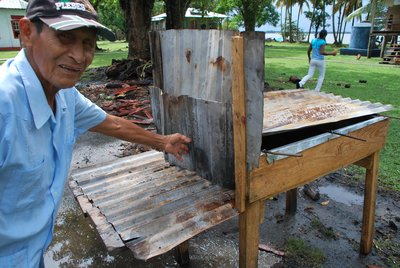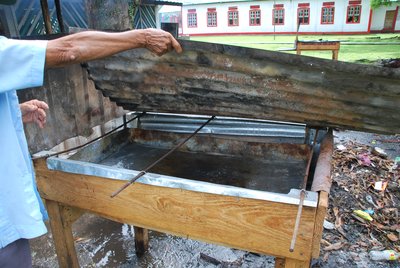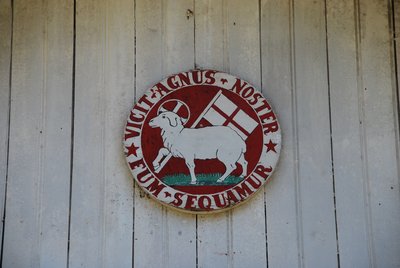Note: Moskitia is the name of the Miskito homeland. It is divided into two roughly equal halves by the Wangki River. The river forms the border between Honduran and Nicaraguan Moskitia.
Miskito is the name of the indigenous inhabitants of Moskitia and their language.
Moskito Coast is the European name for the coast of Nicaraguan Moskitia. Before incorporation into the republics of Nicaragua and Honduras, Moskitia was a British Protectorate known historically as British Moskitia.
Cobos is the Miskito name for the traditional elevated cooking platforms found throughout the region.
See also: Moskitia: Field Notes
These images were taken in the coastal settlements of Karata, WaWaBar and Bismuna.
Unlike the interior, there is no clay at all to be found in the sandy soils of the Coast. Consequently there can be found only open cobos, made from loose stacked stones or stone layed in mortar. There are no masonry ovens for the same reason.
A typical kitchen. The cobos, which consists of two blocks and a grill is to the right of the sink. The spacing of the boards in the wall behind the cobos allows some smoke to be evacuated.
A large cobos in the cookhouse of the Moravian Church in Karata. The base and walls of the cobos are built of regular masonry materials.
The whole cookhouse and dining room are so full of smoke that everyone except the cook has to stand outside. This was the day of the festival of King Palanke and the cookhouse was making dinner for the whole congregation plus guests from Lam Lia and Bilwi.
Cobos in the annex of the cookhouse of the moravian church. Note how the corrugated tin sheets are used to close off the top and direct the heat beneath the pot, as would a closed cobos. The body of this cobos consists of a wooden box filled with sand.
The pot rests upon two partially burnt out railway lines.
The cookhouse and its annex to the left.
Within the church grounds at Karata there were 6 small ovens that were used for baking bread and cakes.
As large a fire as possible is lit upon the top sheet of tin, which covers the bake chamber. The fire is kept going until the whole tin bake chamber is hot enough to use. The vertical piece of tin at the back of the oven acts as a chimney and prevents embers dropping into the bake tray.
The bake tray being removed.
Insertion of the bake tray.
A sheet of tin is used as a door.
View of the bake tray inside the tin lined bake chamber bake chamber. These ovens have no Miskito name and are called by the spanish word Orno.
Our Lamb Is Victorious Let Us Follow Him.
